- Currant Hedge as a Perfect Landscape Option
- Natural Beauty
- Easy Maintenance
- Edible Harvest
- Attracts Wildlife
- Flexible Design
- Multiple Varieties
- The Aesthetic Appeal of Currant Hedge
- 1. Lush Green Foliage
- 2. Colorful Berries
- 3. Versatility
- 4. Seasonal Interest
- 5. Low Maintenance
- Easy Maintenance of Currant Hedge
- Pruning
- Watering
- Fertilizing
- Weed Control
- Pest and Disease Management
- Enhancing Privacy with Currant Hedge
- 1. Dense Foliage
- 2. Fast Growth
- 3. Low Maintenance
- 4. Aesthetic Appeal
- 5. Cost-Effective Solution
- Environmental Benefits of Currant Hedge
- 1. Biodiversity
- 2. Soil Erosion Control
- 3. Air Purification
- 4. Stormwater Management
- 5. Noise Reduction
- 6. Aesthetic Appeal
- Choosing the Right Variety of Currant Hedge
- 1. Purpose of the hedge
- 2. Climate and soil conditions
- 3. Maintenance requirements
- 4. Availability and local regulations
- Planting and Growing Currant Hedge
- Choosing the right site
- Preparing the soil
- Planting the currant bushes
- Watering and mulching
- Pruning and maintenance
- Pest and disease control
- Pruning and Shaping Currant Hedge
- 1. Pruning Basics
- 2. Shaping Techniques
- 3. Maintenance Tips
- Harvesting and Using Currants from the Hedge
- 1. Harvesting
- 2. Cleaning and Sorting
- 3. Using Fresh Currants
- 4. Making Currant Jam
- 5. Drying Currants
- 6. Freezing Currants
- 7. Enjoying the Currant Harvest
- Questions and Answers:
- Can I plant currants in my front yard?
- How tall does a currant hedge grow?
- What are some benefits of having a currant hedge?
- Can I eat the currants from my hedge?
- How much sunlight do currant hedges need?
- What is the best time to plant currant hedges?
- Videos: SEE HOW SHE USES THIS SIMPLE PRIVACY TRICK OUTSIDE! OUTDOOR BACKYARD Ideas To Tryout NOW!
When it comes to landscaping, homeowners often seek out options that are not only visually appealing but also low-maintenance. One option that ticks both of these boxes is a currant hedge. Currant hedges are not only easy to care for but also add a touch of natural beauty to any outdoor space.
A currant hedge comprises a row or border of currant plants, typically Ribes rubrum or Ribes nigrum, that are closely spaced together. These deciduous shrubs are known for their dense growth and vibrant foliage, making them an excellent choice for creating a lush and visually captivating hedge. Whether you opt for red currants or black currants, the end result is a striking hedge that will enhance the overall aesthetics of your landscape.
One of the advantages of a currant hedge is its low maintenance requirements. Currant plants are generally disease-resistant and tolerate a wide range of soil conditions. They are also known for their ability to thrive in both full sun and partial shade, making them versatile and adaptable to different environments. With minimal pruning and occasional watering, currant hedges can easily be maintained and kept in their optimal condition.
Did You Know?
In addition to their ornamental value, currant plants also produce delicious fruits that can be used in a variety of culinary preparations. From jams and jellies to pies and desserts, the fruits of a currant hedge can provide a tasty and unique addition to your kitchen.
Whether you’re looking to create a natural boundary around your property or simply want to add some greenery to your garden, a currant hedge is an excellent choice. With its easy maintenance and stunning appearance, a currant hedge can serve as a beautiful and functional addition to any landscape. So why not consider planting a currant hedge and enjoy the benefits it brings to your outdoor space?
Currant Hedge as a Perfect Landscape Option
A currant hedge is a versatile and attractive option for landscaping. Whether you have a small garden or a large estate, a currant hedge can enhance the aesthetics and functionality of your outdoor space. Here are some reasons why a currant hedge is a perfect landscape option:
Natural Beauty
One of the main advantages of a currant hedge is its natural beauty. The vibrant green leaves and colorful berries of currant bushes create a visually appealing and inviting atmosphere in any garden. The dense foliage of the hedge also provides privacy and acts as a natural windbreak.
Easy Maintenance
Currant hedges are relatively low-maintenance compared to other hedge varieties. They are resistant to pests and diseases, and they require minimal pruning. With regular watering and occasional fertilization, your currant hedge can thrive without much effort.
Edible Harvest
Another unique feature of currant hedges is their edible harvest. Currants are delicious and nutritious fruits that can be used in various culinary preparations. From jams and jellies to pies and sauces, you can enjoy the fruits of your currant hedge all summer long.
Attracts Wildlife
Because currants are a valuable food source, a currant hedge will attract a variety of wildlife to your garden. Birds, bees, and butterflies are particularly attracted to the flowers and fruits of currant bushes, adding life and biodiversity to your landscape.
Flexible Design
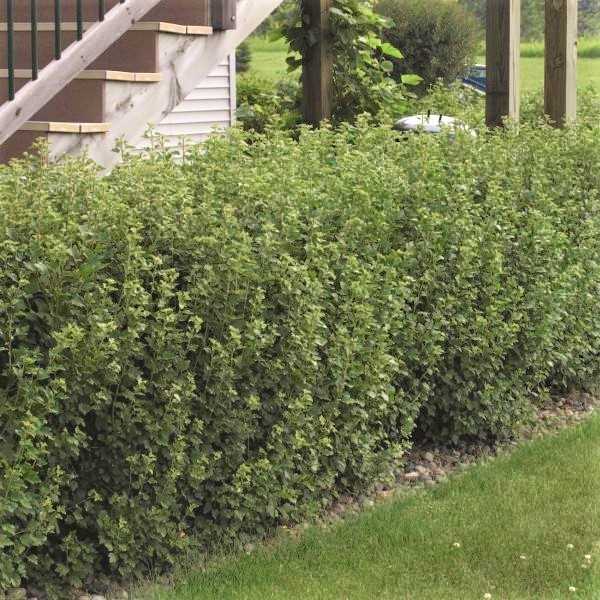
Currant hedges are flexible in design, allowing you to shape them to your desired height, length, and thickness. Whether you prefer a formal, neatly trimmed hedge or a more informal, natural look, currant bushes can adapt to your landscaping style.
Multiple Varieties
Currant hedges come in a variety of species, each with its own unique characteristics. Red currants, black currants, and white currants are the most popular varieties, but there are also ornamental currants available. This allows you to choose the perfect currant hedge to suit your taste and preferences.
Overall, a currant hedge is a perfect landscape option that combines beauty, functionality, and ease of maintenance. Its natural beauty, versatility, and edible harvest make it an excellent addition to any garden or outdoor space. Consider planting a currant hedge today and enjoy the many benefits it has to offer!
The Aesthetic Appeal of Currant Hedge
Currant hedges are not only a practical choice for landscaping, but they also have a charming aesthetic appeal that can enhance the beauty of any outdoor space. Whether you have a small garden or a large estate, a currant hedge can add a touch of elegance and sophistication to your landscape.
1. Lush Green Foliage
One of the most striking features of a currant hedge is its lush green foliage. The leaves of the currant plant are vibrant and abundant, creating a dense hedge that offers both privacy and beauty. When the sunlight filters through the leaves, it creates a dappled effect, adding depth and texture to the hedge.
2. Colorful Berries
In addition to their green foliage, currant plants also produce colorful berries. Depending on the variety, the berries can range from bright red to black. The berries not only add visual interest to the hedge, but they also attract birds and other wildlife, bringing your garden to life.
3. Versatility
Currant hedges are available in a variety of species and cultivars, allowing you to choose the one that best suits your aesthetic preferences. From the compact and tidy American black currant to the decorative and ornamental European black currant, there is a currant hedge for every style and taste.
4. Seasonal Interest
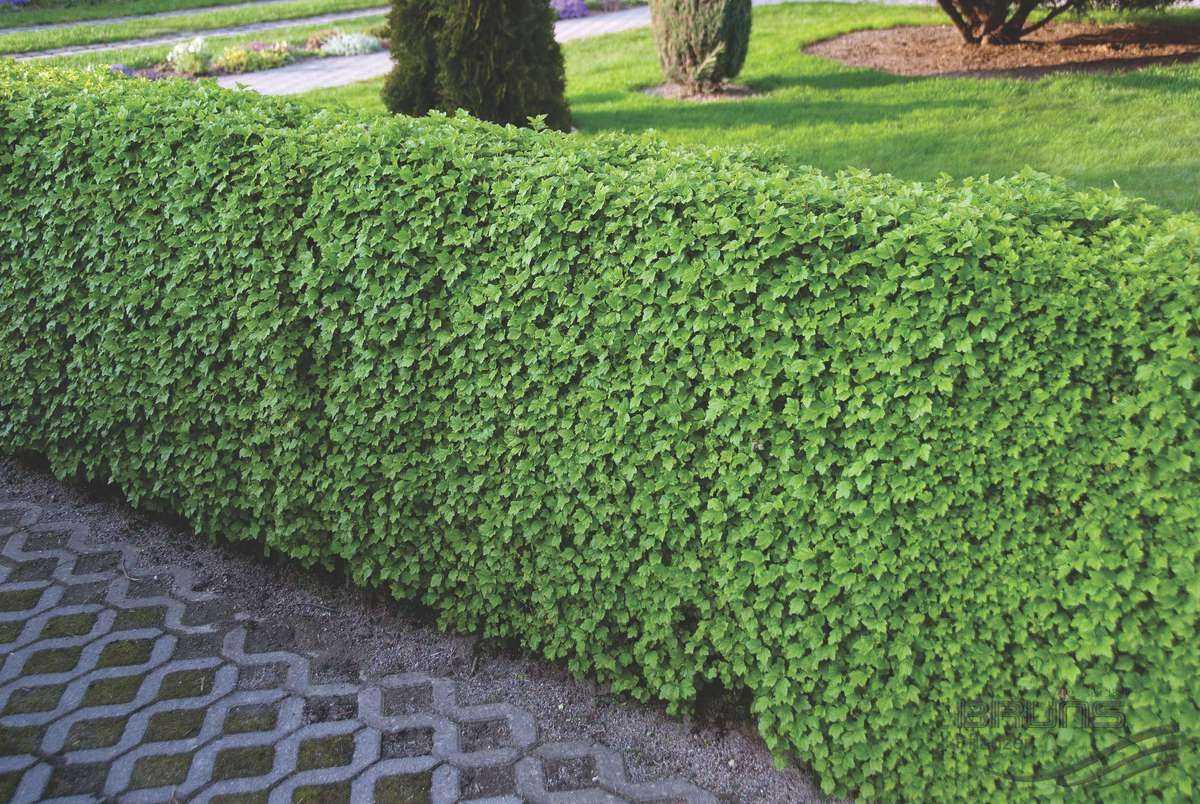
The beauty of a currant hedge is not limited to a single season. In spring, the hedge bursts into vibrant foliage and delicate flowers, creating a colorful display. During summer, the hedge is adorned with ripe berries, and in autumn, the leaves turn vibrant shades of red, orange, and yellow. Even in winter, the dense foliage and berries provide interest and texture to the landscape.
5. Low Maintenance
Despite their visual appeal, currant hedges are relatively low maintenance. Once established, they require minimal pruning and care. This makes them a perfect choice for those who want a beautiful landscape without spending hours tending to it.
In conclusion, a currant hedge offers not only a practical solution for landscaping but also an aesthetic appeal that can transform your outdoor space. With their lush green foliage, colorful berries, versatility, seasonal interest, and low maintenance, currant hedges are a beautiful addition to any landscape.
Easy Maintenance of Currant Hedge
Pruning
One of the reasons why currant hedges are popular is because they require minimal maintenance. Pruning is the main task you’ll need to perform to keep your currant hedge in top shape.
When to prune: Prune currant hedges during the dormant season, which is typically in late winter or early spring. Avoid pruning during periods of active growth as this can negatively impact the plant’s health.
How to prune: Start by removing any dead, damaged, or diseased branches. Then, trim back any overgrown branches to maintain a neat and compact shape. Make sure to cut just above a bud or lateral branch to encourage new growth.
Watering
Watering is another important aspect of maintaining a healthy currant hedge.
How often to water: Water your currant hedge regularly, especially during dry spells. Aim for about 1 inch of water per week.
How to water: Water deeply, making sure the water reaches the plant’s root zone. Avoid overhead watering, as this can promote the development of diseases.
Fertilizing
Currant hedges don’t generally require much fertilization, but a little boost can help them thrive.
When to fertilize: Fertilize your currant hedge in early spring, just as new growth begins.
What fertilizer to use: Use a balanced, slow-release fertilizer or compost. Follow the instructions on the product packaging for the proper application rate.
Weed Control
Keeping weeds under control is essential for the health and appearance of your currant hedge.
Weed prevention: Apply a layer of mulch around the base of your hedge to suppress weed growth. This will also help retain moisture in the soil.
Weed removal: Regularly inspect your hedge for any weed growth and remove them promptly. Use a hand tool or carefully pull them by hand, making sure to remove the entire root.
Pest and Disease Management
While currant hedges are relatively resistant to pests and diseases, it’s still important to keep an eye out for any issues.
Pest control: Monitor your hedge for common pests such as aphids or spider mites. If necessary, use organic insecticides or natural pest control methods to manage infestations.
Disease prevention: Ensure proper air circulation around your hedge by pruning it to prevent the development of fungal diseases. If you notice any signs of disease, such as powdery mildew or leaf spot, consult a local garden center for appropriate treatment options.
Enhancing Privacy with Currant Hedge
A currant hedge can be a fantastic option for enhancing privacy in your outdoor space. With its dense foliage and fast growth, a currant hedge can quickly create a barrier between your property and the outside world. Here are a few reasons why a currant hedge is an excellent choice for enhancing privacy:
1. Dense Foliage
One of the primary reasons why a currant hedge is great for privacy is its dense foliage. The leaves of currant bushes grow close together, creating a thick barrier that effectively blocks the view from the outside. This dense foliage not only offers privacy but also provides a sense of seclusion and tranquility in your outdoor space.
2. Fast Growth
Another advantage of a currant hedge is its fast growth rate. Currant bushes are known for their vigorous growth, which means that your hedge will reach the desired height and thickness in a relatively short period. This is especially beneficial if you want to establish privacy in your outdoor space quickly.
3. Low Maintenance
Currant hedges are relatively low maintenance, making them an attractive option for enhancing privacy. Once established, currant bushes require minimal pruning and care. Regular watering and occasional fertilizing are usually sufficient to keep your hedge healthy and thriving. This low maintenance requirement makes a currant hedge a practical choice for homeowners who want privacy without the hassle of high maintenance landscaping.
4. Aesthetic Appeal
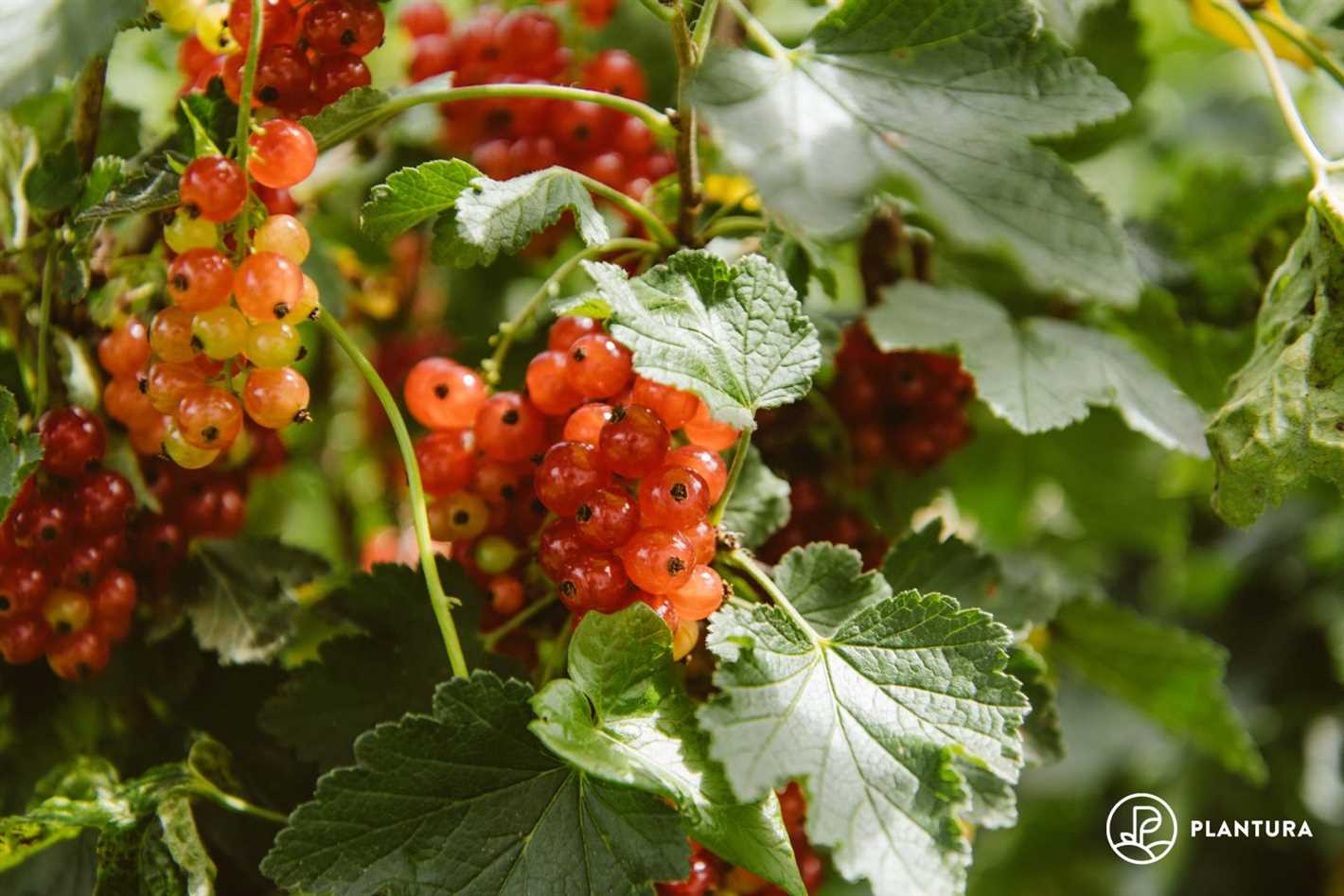
In addition to the privacy benefits, a currant hedge can also add aesthetic appeal to your landscape. The vibrant green foliage and occasional fruit-bearing clusters can enhance the overall beauty of your outdoor space. With its lush and natural look, a currant hedge can create a more inviting and pleasant environment for you and your family.
5. Cost-Effective Solution
Compared to other privacy options such as fences or walls, a currant hedge is a cost-effective solution. The initial investment in purchasing currant plants and establishing the hedge is relatively low. Additionally, the low maintenance requirements of a currant hedge mean that you won’t have to spend a lot of money on regular upkeep and repairs.
In conclusion, a currant hedge is an excellent choice for enhancing privacy in your outdoor space. With its dense foliage, fast growth, low maintenance requirements, aesthetic appeal, and cost-effectiveness, a currant hedge offers a practical and attractive solution for creating a private and tranquil environment for you and your family.
Environmental Benefits of Currant Hedge
Planting a currant hedge not only adds beauty and visual interest to your landscape, but it also provides a range of environmental benefits. Here are some of the key advantages of incorporating a currant hedge into your outdoor space:
1. Biodiversity
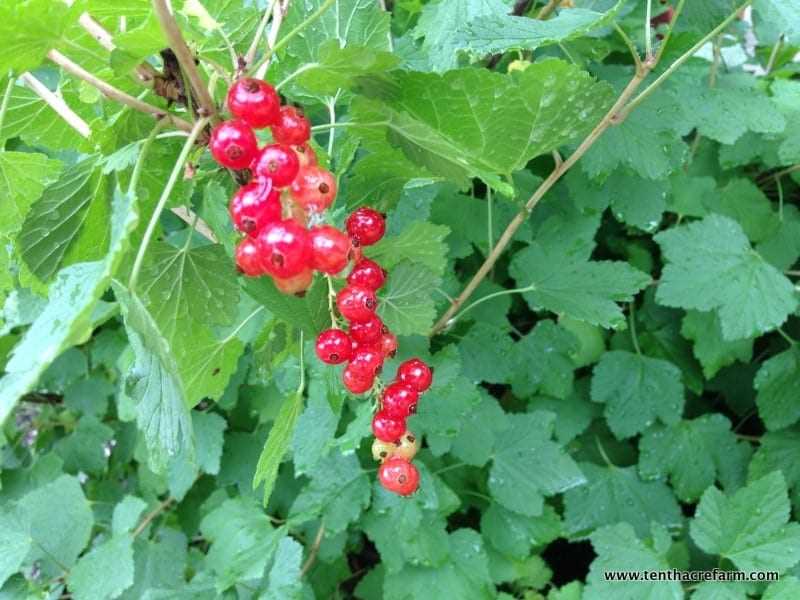
A currant hedge can attract a variety of wildlife such as birds, butterflies, and bees. The dense foliage and berries of the currant bushes offer shelter, nesting sites, and a food source for many native species. This promotes biodiversity in your garden and contributes to the overall health of the ecosystem.
2. Soil Erosion Control
The deep-rooted nature of currant bushes helps stabilize soil and prevent erosion. The extensive root systems of these plants bind the soil particles together, reducing the risk of soil erosion caused by heavy rainfall or wind. This is particularly beneficial for gardens located on slopes or areas prone to erosion.
3. Air Purification
Like other plants, currant bushes absorb carbon dioxide and release oxygen during photosynthesis. Increased planting of currant hedges can help reduce the levels of carbon dioxide in the atmosphere and improve air quality. Additionally, the dense foliage of the hedge acts as a natural filter, trapping dust and pollutants and reducing their presence in the air.
4. Stormwater Management
A well-established currant hedge can help manage stormwater runoff. The dense foliage and roots of the hedge absorb and slow down rainwater, allowing it to percolate into the soil instead of running off. This helps recharge groundwater reserves and reduces the load on stormwater drainage systems, contributing to improved water quality and reduced flooding risks.
5. Noise Reduction
The thick foliage of a currant hedge acts as a natural sound barrier, helping to absorb and block out noise from nearby roads, neighbors, or other sources. By planting a currant hedge as a boundary or screen, you can create a more peaceful and tranquil environment in your outdoor space.
6. Aesthetic Appeal
Aside from its environmental benefits, a well-maintained currant hedge adds beauty and visual interest to your landscape. With its vibrant foliage, delicate flowers, and colorful berries, a currant hedge can enhance the overall aesthetics of your garden and create a welcoming and attractive outdoor environment.
In conclusion, a currant hedge offers numerous environmental advantages, including promoting biodiversity, controlling soil erosion, purifying the air, managing stormwater, reducing noise, and enhancing the overall beauty of your landscape. Consider planting a currant hedge in your garden to enjoy these benefits while creating a sustainable and aesthetically pleasing outdoor space.
Choosing the Right Variety of Currant Hedge
If you are considering planting a currant hedge in your landscape, it is important to choose the right variety that will suit your needs and preferences. There are several factors to consider when selecting the right currant hedge variety.
1. Purpose of the hedge
Firstly, determine the purpose of the hedge. Are you looking for a hedge that provides privacy and acts as a barrier? Or do you want a hedge that adds aesthetic value to your garden?
For privacy and barrier purposes, you may want to choose a variety that has dense foliage and grows tall. Red currants (Ribes rubrum) are a popular choice for this, as they can grow up to 6 feet tall and have dense leaves that provide excellent coverage.
If you are looking for an aesthetically pleasing hedge, consider varieties such as black currants (Ribes nigrum) or white currants (Ribes sativum). These varieties have attractive berries and foliage, making them a beautiful addition to any landscape.
2. Climate and soil conditions
Another important factor to consider is the climate and soil conditions of your area. Different currant hedge varieties have different requirements when it comes to temperature, sunlight, and soil type.
Black currants, for example, thrive in cooler climates and can tolerate partial shade. Red currants, on the other hand, prefer full sun and well-draining soil. White currants are also adaptable to different climates, but they do best in areas with cooler summers.
3. Maintenance requirements
Consider the maintenance requirements of the currant hedge variety you are interested in. Some hedges may require more pruning and shaping to maintain their desired shape and size.
If you prefer a low-maintenance hedge, consider varieties that have a compact growth habit and require minimal pruning, such as certain cultivars of black currants.
4. Availability and local regulations
Lastly, check the availability of the currant hedge variety you want in your local area. Some varieties may not be readily available or may not be allowed due to local regulations or restrictions.
Check with your local nurseries or garden centers to see what currant hedge varieties are available and suitable for your region.
Remember to consider these factors when selecting the right variety of currant hedge. By choosing the right variety, you can create a beautiful and functional hedge that enhances your landscape.
Planting and Growing Currant Hedge
Choosing the right site
When planting a currant hedge, it is important to choose the right site to ensure optimal growth and productivity. Currant bushes prefer a sunny or partially shaded location with well-drained soil. Avoid areas with heavy clay soil or waterlogged conditions, as this can lead to root rot and other plant diseases.
Preparing the soil
Before planting your currant hedge, it is essential to prepare the soil properly. Start by removing any weeds or grass from the planting area. Loosen the soil with a garden fork or tiller to a depth of at least 12 inches. Incorporate organic matter, such as compost or well-rotted manure, into the soil to improve drainage and fertility.
Planting the currant bushes
When planting currant bushes, space them about 3-4 feet apart. Dig a hole that is wide and deep enough to accommodate the root ball of the plant. Gently loosen the roots and place the bush in the hole, making sure that the soil level is the same as it was in the nursery container. Backfill the hole with soil, firming it gently around the roots.
Watering and mulching
After planting, water the currant bushes thoroughly to settle the soil. Provide regular irrigation during dry periods, especially during the first growing season. Apply a layer of organic mulch, such as wood chips or straw, around the base of the plants to suppress weeds, conserve moisture, and regulate soil temperature.
Pruning and maintenance
Currant hedges require regular pruning to maintain their shape and productivity. Prune the bushes in late winter or early spring before new growth begins. Remove any dead, damaged, or crossing branches. Thin out the interior of the hedge to improve air circulation and light penetration. Fertilize the plants in early spring and late summer with a balanced fertilizer to promote healthy growth.
Pest and disease control
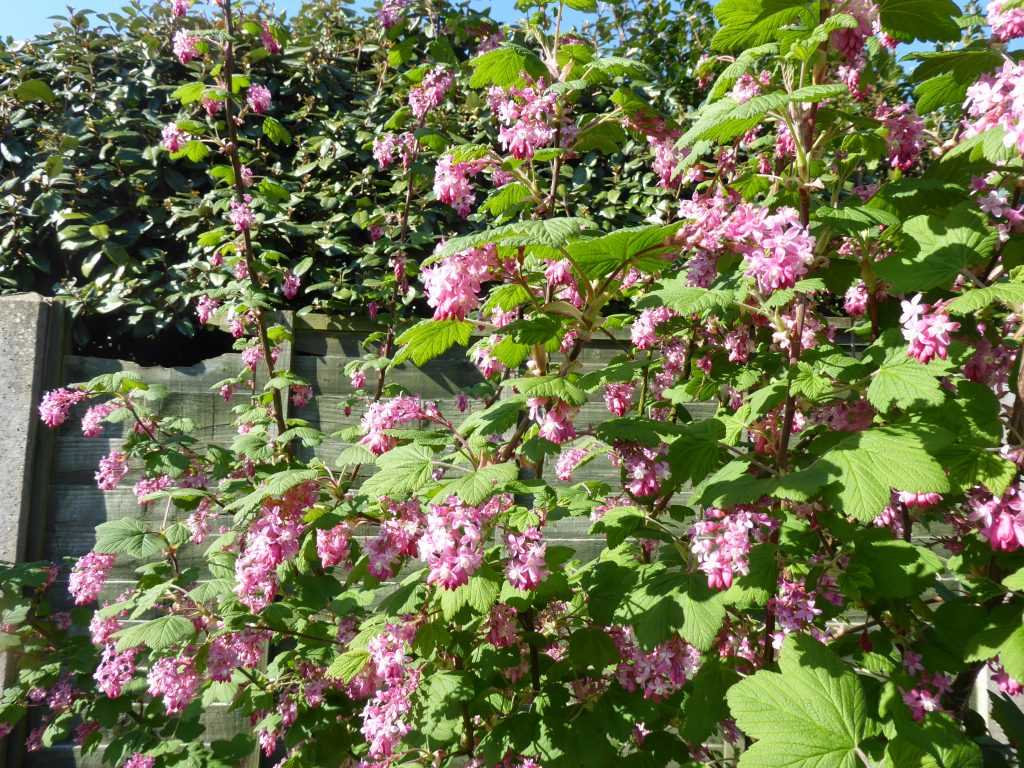
Keep an eye out for common pests and diseases of currant bushes, such as aphids, powdery mildew, and currant blister aphid. Monitor your plants regularly and take appropriate action, such as using insecticidal soap or applying fungicides, if necessary. Remove any infected or infested plant material to prevent the spread of pests and diseases.
By following these planting and growing tips, you can enjoy a beautiful and productive currant hedge in your landscape. Currant hedges not only provide privacy and aesthetic appeal but also produce delicious berries for culinary use.
Pruning and Shaping Currant Hedge
1. Pruning Basics
Pruning is an essential task to maintain the health and shape of your currant hedge. It helps promote good airflow, prevents diseases, and encourages new growth. Here are some basic pruning techniques for your currant hedge:
- Yearly Pruning: Prune your currant hedge annually during its dormant season, which is usually in late winter or early spring.
- Remove Dead or Diseased Branches: Start by removing any dead or diseased branches using clean and sharp pruning tools. This will prevent the spread of diseases and improve the overall health of the hedge.
- Thin Out Excessive Growth: Next, thin out any overcrowded areas by selectively removing some branches. This will improve airflow and light penetration, promoting healthier growth.
- Reduce Height and Width: If your currant hedge has grown too tall or wide, you can prune it to your desired height and width. Trim the branches back to a lateral bud, making sure to maintain a uniform shape.
2. Shaping Techniques
In addition to regular pruning, shaping your currant hedge can create a more aesthetically pleasing landscape. Here are some shaping techniques to consider:
- Formal Hedge: For a formal look, prune your currant hedge into a symmetrical shape, such as a rectangular or square shape. Use a string or guide to ensure straight and even lines.
- Informal Hedge: For a more natural and relaxed appearance, shape your currant hedge with gentle curves and irregular edges. This style is less structured and mimics the look of a hedge found in nature.
- Tapered Hedge: To create a tapered effect, prune the top of the currant hedge slightly narrower than the bottom. This technique allows more sunlight to reach the lower branches and promotes balanced growth.
- Tiered Hedge: For a unique and eye-catching design, consider shaping your currant hedge into tiers or levels. Trim the top branches shorter than the ones below, creating a cascading effect.
3. Maintenance Tips
After pruning and shaping your currant hedge, here are some maintenance tips to keep it healthy and beautiful:
- Fertilize: Apply a balanced fertilizer to your currant hedge after pruning to provide essential nutrients for growth.
- Water: Water your hedge regularly, especially during dry periods, to keep the soil moist but not waterlogged.
- Weed Control: Remove any weeds or grass around the base of your currant hedge regularly to prevent competition for nutrients and water.
- Monitor Pests and Diseases: Regularly inspect your currant hedge for any signs of pests or diseases. If detected, take immediate action to prevent the spread and treat the issue.
By following these pruning and shaping techniques, as well as implementing proper maintenance, you can enjoy a healthy and visually appealing currant hedge in your landscape.
Harvesting and Using Currants from the Hedge
Currants from the hedge can be harvested and used in a variety of ways. Here are some tips on how to make the most of this bountiful fruit:
1. Harvesting
Harvesting currants from your hedge is a simple process. Wait until the berries are fully ripe, typically in late summer or early fall, before picking. Gently grasp the base of the currant cluster and pull it off the branch. Avoid pulling too hard, as this can damage the shrub. Place the harvested currants into a basket or container.
2. Cleaning and Sorting
Once you have harvested your currants, it’s important to clean and sort them. Remove any leaves, stems, or debris from the berries. Rinse the currants with cold water and pat them dry with a towel. Sort through the currants and discard any that are overripe or damaged.
3. Using Fresh Currants
Fresh currants are a delicious addition to many recipes. They can be eaten raw, added to salads, or used to garnish desserts. Their tart flavor pairs well with sweet dishes like cakes, pies, and jams. You can also freeze fresh currants to enjoy them throughout the year.
4. Making Currant Jam
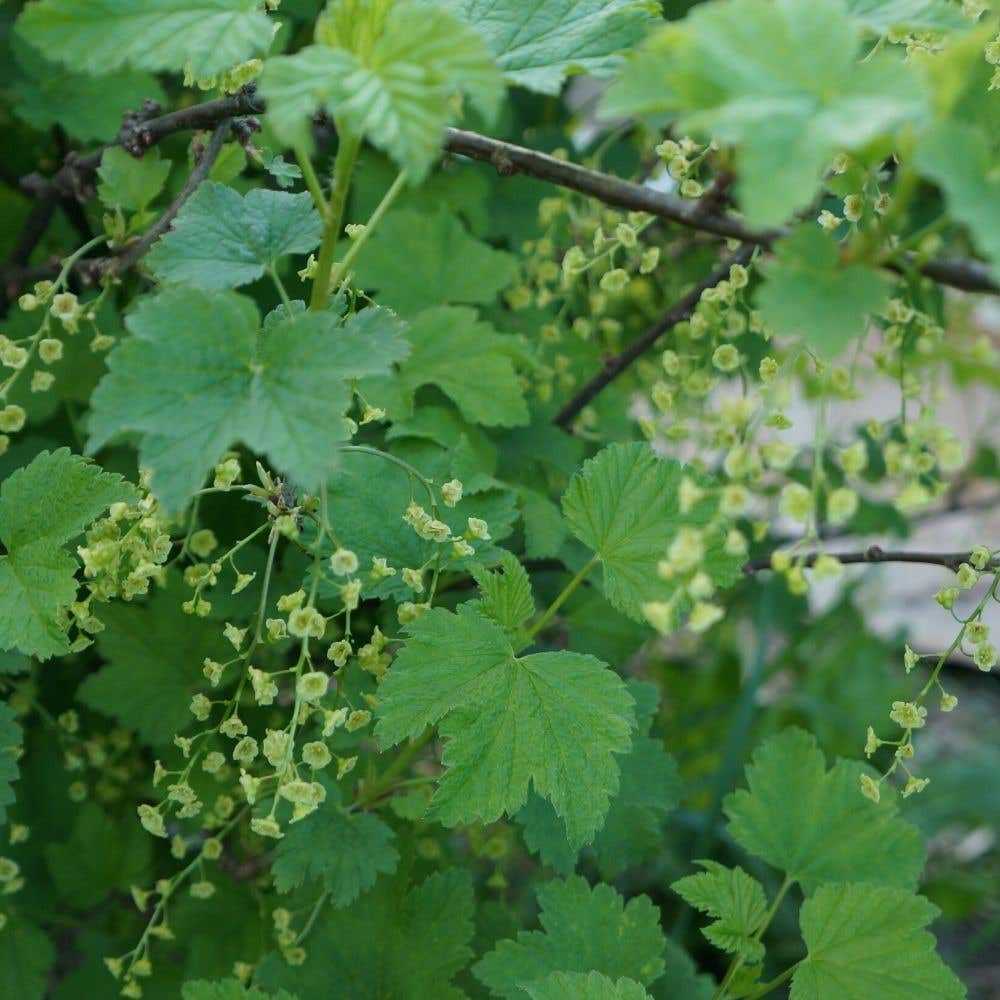
Currant jam is a popular way to enjoy the fruits from your hedge all year round. To make currant jam, combine equal parts currants and sugar in a large pot. Cook over medium heat, stirring occasionally, until the mixture thickens and reaches the desired consistency. Pour the hot jam into sterilized jars and seal them tightly. Allow the jam to cool before storing.
5. Drying Currants
If you have an abundance of currants, you can also dry them for later use. Spread the cleaned currants in a single layer on a baking sheet and place them in an oven set to a low temperature, around 140°F (60°C). Leave the door slightly ajar to allow moisture to escape. Stir the currants occasionally and continue drying until they are shriveled and dry to the touch. Store the dried currants in an airtight container.
6. Freezing Currants
To freeze currants, spread them in a single layer on a baking sheet and place them in the freezer. Once frozen, transfer the currants to an airtight container or freezer bag. Frozen currants can be used in smoothies, baked goods, or thawed and used in any recipe that calls for fresh currants.
7. Enjoying the Currant Harvest
Harvesting and using currants from your hedge is a rewarding experience. Whether eaten fresh, made into jam, or dried for later use, currants add a burst of flavor to a variety of dishes. Experiment with different recipes and savor the delicious fruits of your labor.
Questions and Answers:
Can I plant currants in my front yard?
Yes, you can definitely plant currants in your front yard. Currant hedges are not only practical but also add aesthetic value to your landscape. They can be used to create boundaries, provide privacy, and enhance the overall look of your front yard.
How tall does a currant hedge grow?
A currant hedge can grow to be anywhere between 3 to 6 feet tall, depending on the variety of currant you choose and how you prune it. It is important to regularly trim and maintain your hedge to ensure it stays at your desired height.
What are some benefits of having a currant hedge?
Having a currant hedge in your landscape offers several benefits. Firstly, it provides privacy and acts as a natural barrier between your property and the outside world. Secondly, it attracts birds and other wildlife, making your garden more lively and enjoyable. Finally, currant hedges are easy to grow and maintain, requiring minimal effort on your part.
Can I eat the currants from my hedge?
Yes, you can definitely eat the currants from your hedge. Currants are edible berries that are rich in flavor and nutrients. They can be used in a variety of culinary creations, such as jams, pies, and sauces. Just make sure to properly wash the currants before consuming them.
How much sunlight do currant hedges need?
Currant hedges prefer partial to full sunlight. They need at least 6 hours of direct sunlight per day to thrive and produce healthy berries. It is important to choose a location for your hedge that receives adequate sunlight throughout the day.
What is the best time to plant currant hedges?
The best time to plant currant hedges is in the early spring or late fall, when the weather is cool and the soil is moist. This allows the plants to establish their root systems before the onset of hot summer temperatures or freezing winter conditions. Make sure to water the newly planted hedge regularly to help it get established.







